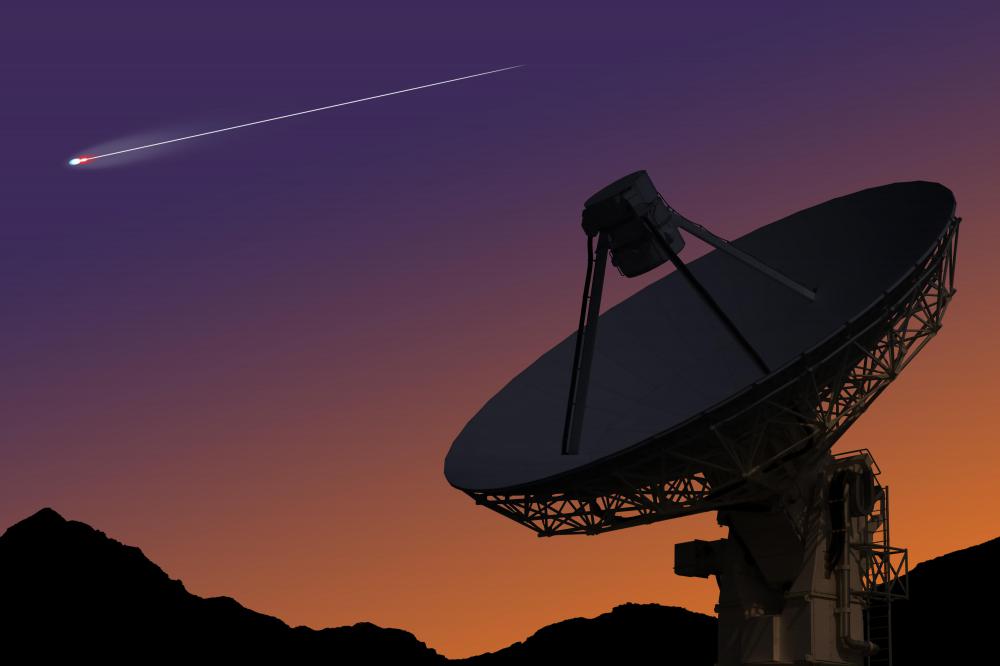At WiseGEEK, we're committed to delivering accurate, trustworthy information. Our expert-authored content is rigorously fact-checked and sourced from credible authorities. Discover how we uphold the highest standards in providing you with reliable knowledge.
What is the History of the Galaxy?
Our Milky Way galaxy is believed to be one of the original galaxies that formed at the dawn of the universe, more than 13.5 billion years ago. The universe itself began 13.7 billion years ago with the Big Bang. For about 200 million years, the universe was dark, as matter had not condensed into stars yet. During this period, matter slowly condensed into progressively denser pockets.
In some areas, the density and temperature necessary to initiate nuclear fusion was reached, and the first stars were born. These primordial "Population III" stars are thought to have been short-lived, and extremely massive — hundreds of times the mass of our Sun. Being so massive, they were also very unstable, producing supernovae within mere tens of millions of years, leaving behind black holes. Out of their remnants, Population II stars with more typical masses were formed.
Scientists have put the age of the Milky Way Galaxy at 13.6 billion years ago, give or take 800 million years. Further studies will be needed to narrow down that number further.

Early in its history, the Milky Way may have undergone an active galaxy phase, where a central supermassive black hole was formed out of its condensed core, and infalling gas from the galactic debris disc released large amounts of energy. It is difficult to tell, because the supermassive black hole at the center of the galaxy has already swallowed the evidence. Astronomers believe the radio source Sagittarius A* is the Milky Way's supermassive black hole. Sagittarius A* is a compact object containing 2.6 ± 0.2 million solar masses, confined in a volume with a radius no more than 17 light-hours (120 AU).

As the Milky Way Galaxy has aged, numerous stars have undergone supernovae, decreasing the amount of light elements in the galaxy while increasing the amount of metals. This has given rise to metal-rich Population I stars like our Sun. Many of the stars in the galaxy have condensed into a fast-rotating galactic disc, 100 times longer than it is thick. This disc is surrounded by a halo of old stars, called the galactic halo.

In about three billion years, the Milky Way Galaxy is expected to collide with its similarly-sized neighbor, the Andromeda Galaxy. When this happens, it will not be especially noticeable, as the stellar collision rate will still be practically zero, but the average stellar density will increase by a factor of roughly 2.
AS FEATURED ON:
AS FEATURED ON:













Discussion Comments
I have studied the major theories presented to explain the creation of the Universe and the Milky Way, but I still have a difficult time wrapping my mind around the idea that all we now know was formed from basically nothing.
@Animandel - I agree that scientists have made great strides in solving the mysteries of the heavens. I would not even attempt to begin explaining how they do what they do, or how they devise the theories they present. However, I would point out that for many of the theories we accept as truth regarding our galaxy, there are contradictory theories that have been put forth by other scientists.
In regard to the predictions these scientists make, we cannot know their accuracy until the incidents come to fruition or fail to do so in a specific time period. So we will have to wait three billion years to see whether the Milky Way actually collides with the Andromeda Galaxy, as mentioned in the final paragraph of this article.
How do scientist figure all this stuff out? I find it remarkable that scientists can determine how old the Milky Way is and make predictions about how it will fair in the future.
Post your comments